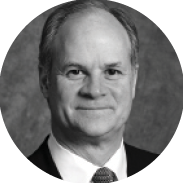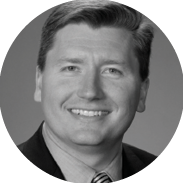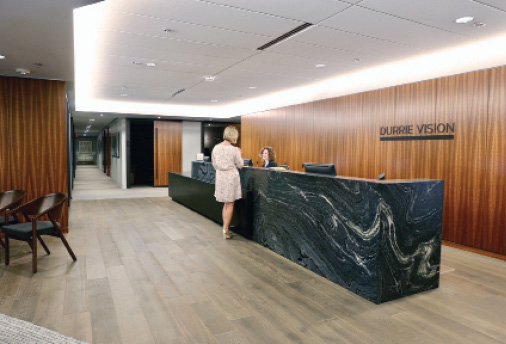

Our practice officially stopped accepting Medicare and all other health insurance in 2005, but even for years before that we had focused mainly on private-pay refractive surgery. After taking a long, hard look at what we wanted to accomplish for our patients and for our practice, we decided that adopting an all cash-pay model was the right direction for us to take as an organization.
Segueing to this model offered us the opportunity to reinvest the time and energy our office personnel were expending on health insurance billing for our patient services. We moved personnel around, trained them in other areas, and essentially strengthened the patient experience as a direct result of transitioning to an all cash-pay practice. Now we have more time to spend with patients, and we move at a pace that makes them comfortable that we're the right people to be making decisions about their lifetime vision.
At the outset of this article, we acknowledge that the ophthalmologic cash-pay model will not be effective for every practice. We therefore advise taking into account some key considerations, outlined here, before deciding whether the transition to all cash-pay would be beneficial for your specific setup.
BASIC STEPS
We're fortunate in ophthalmology to have a variety of practice models to choose from. Most practices today accept third-party payments from health insurance companies and Medicare, and most also offer cash-pay services, including laser vision correction and upgrades to cataract surgery such as premium IOL technologies, astigmatic incisions, and laser cataract surgery. But for those who are intrigued by an all cash-pay model, following are the basic steps to prepare to adopt this approach for your practice.
Step No. 1: Learn from peers who have gone before you. For anyone who is thinking about adopting the all cash-pay model, the first step is to talk to surgeons who have tried it and who are succeeding with it. Find out what they like about the model, what they don’t like about it, and what they wish they had known before adopting the all cash-pay model. Fortunately, as we all know, many practitioners in our profession are open books when it comes to sharing advice and practice pointers with their peers.
Step No. 2: Understand that the transition won’t happen overnight. It can take a while to drop out of Medicare. When we initially decided to stop accepting Medicare and other health insurance, we continued to treat existing patients who used third-party payers, and we continued to bill for their follow-up care in that manner.
The process of notifying CMS that we wanted to opt out of Medicare was tedious. First, the practice was required to submit voluminous paperwork. Then there was the process of CMS actually accepting and processing that paperwork. They undoubtedly asked, “Do you really want to drop out?” And our answer was a resounding yes.
Step No. 3: Consider your referral base. If you do a lot of comanagement with outside optometrists, an all cash-pay model might not be the best decision for your practice. The simplest reason for this is that billing can be confusing if you do not offer the same insurance programs as your referring doctors.
We had taken this into consideration during our decision-making process, and therefore, at about the same time we transitioned to all cash-pay services, we hired an on-staff optometrist to join our practice. (Today we have two.) A large part of why our billing is so clean is that we don’t do a lot of sharing of patient care. We certainly do work with many other ophthalmologists and with optometrists, and we do accept referrals, but it is no longer a large part of our strategy.
Step No. 4: Consider the procedures you offer and how no longer accepting third-party payment could affect your revenue from those procedures. We offer all eight of the available refractive surgery procedures: LASIK, PRK, small-incision lenticule extraction, phakic IOLs, corneal inlays, CXL, refractive lens exchange (RLE), and refractive cataract surgery. In our practice, it no longer matters if the patient has a billable cataract—because we do not submit a claim for that cataract surgery procedure to Medicare or health insurance—but we still distinguish between RLE and cataract surgery for our patients. In the presence of a cataract, we perform refractive cataract surgery with advanced IOLs and control of astigmatism.
In should be noted that, for practices that use a collaborating ambulatory surgery center, making that distinction regarding a billable cataract does matter, so that Medicare or the patient’s health insurance can be billed appropriately for the covered service.
Step No. 5: Think about the future scope and size of your practice. Once you make the decision to adopt this practice model, it is imperative to make sure everyone involved with your practice is on the same page. If you are in solo practice, think ahead to the future: You’re probably not going to be by yourself forever. If and when you do recruit somebody to join your practice, make sure that person fits your model and understands it well.
LOWERING OVERHEAD COSTS
Over the years, the all cash-pay model has allowed us to lower our overhead tremendously. First and foremost, we have no billing office. (We do offer financing plans for some surgical procedures, but the administration for those falls on third-party providers.) By eliminating our billing department, we lowered our overhead by about 30%. We reinvested that money into enhancing our patient services, as mentioned earlier.
The change has also allowed us to streamline our office design. We built another office a year ago, and we designed it without a waiting room (Figure). As soon as patients enter the office for their appointment, they're met at the front desk and taken back. This innovative design can be used thanks to the comfortable pace we set for our patient visits.


Figure. The lounge area (top) and check-in area (bottom) at Durrie Vision.
Of course, when patients call our office, we tell them up front that we don’t accept insurance or Medicare. Without a doubt, that deters some patients from choosing us as their provider. When patients come in for the first time, we also have them sign a release stating that they understand we will not bill insurance or Medicare. In all of our patient questionnaires, the overarching message is that patients are extremely satisfied with the services we provide—even though we accept no insurance or Medicare payments.
OTHER CONSIDERATIONS
As we look toward the future of ophthalmology, it is important to keep two things in mind: The field of refractive cataract surgery is growing, and the population is aging. There will be a greater opportunity for us to perform refractive cataract surgery in the pre-Medicare population, if you will, and having the option to bill insurance for the covered portions of this surgical procedure has obvious advantages. In lieu of an all cash-pay model, one option is to continue to accept selected insurance plans from health insurance companies that are known for their efficiencies in billing and collections. There is a lot to be said in favor of that model, too. Another option is to foray into an all cash-pay model gradually, perhaps at first by no longer accepting Medicare and then eventually phasing out accepting any insurance if the first phase has gone well.
With regard to the practice of refractive surgery, those who want to be full-fledged refractive surgeons must at least be aware of and understand each of the eight surgical options that are currently available to patients. They do not necessarily have to perform all of them, but they must recognize that certain patients are better candidates for one procedure and other patients are better candidates for another—and they must recommend the best procedure for that patient, regardless of whether they perform it.
If you make the decision to be a full-fledged refractive surgeon, you then have some big decisions to make: How does refractive cataract surgery fit into your practice? How does comanagement fit in? What are my goals over the next 10, 15, even 20 years? When you have the answers to those questions, then you can let your participation in insurance follow the model that you’ve chosen for your practice—not the other way around. Our advice: Don't get those decisions backwards. If you all of a sudden say, “I'm going to drop out of Medicare,” and you haven't thought about what your practice model for success is going to be, you could end up regretting your decision.
CONCLUSION
Our boutique practice now consists of three ophthalmologists and two optometrists. We have been very successful, we continue to grow, and we have happy patients and happy employees. Any time somebody talks about insurance or Medicare, our employees almost instantly get a big frown on their face—like, “I hope we never do that again.” They love not having to work with insurance companies, especially because deductibles and copays have gotten so complicated.
We are ultimately happy with our decision to maintain an all cash-pay model, but we recognize that it is not the right decision for everyone or for every practice.




